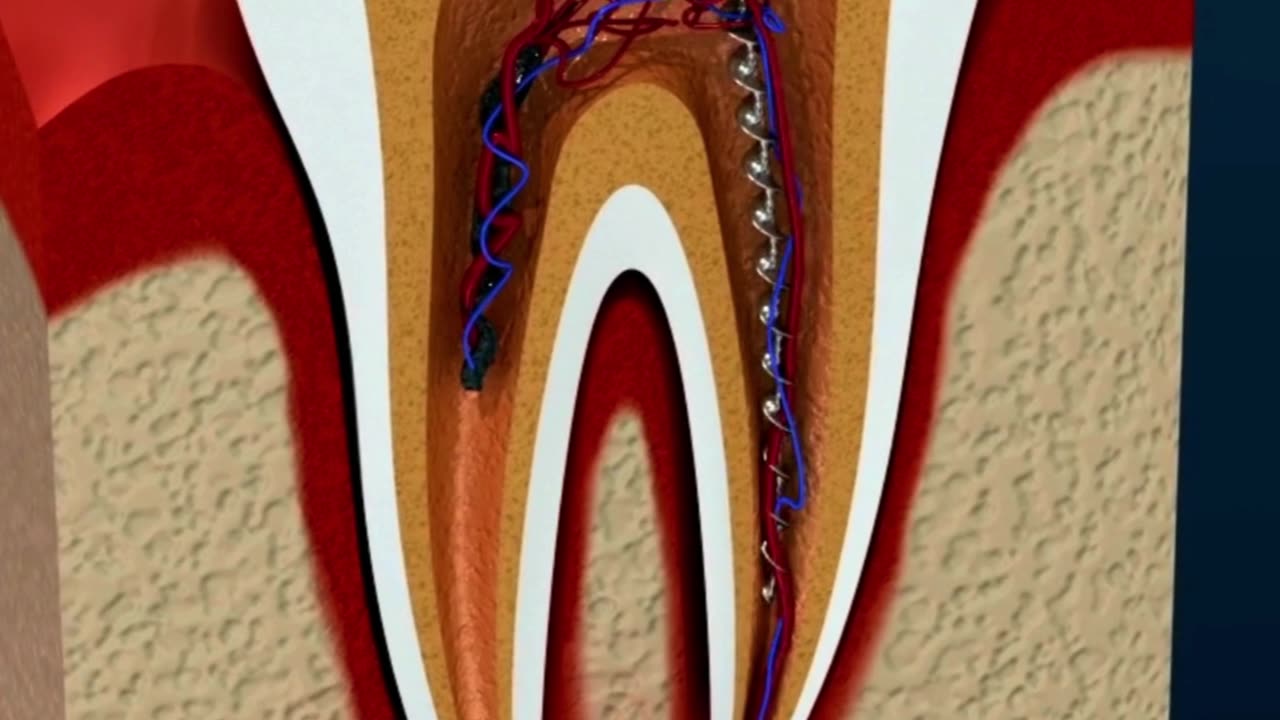Premium Only Content

Root Canal Treatment - RCT
Imagine your tooth as a castle, with the enamel serving as the strong exterior wall that defends the pulp inside. Because it contains the nerves and blood arteries that keep the tooth alive and healthy, the pulp is like the king and queen of the castle.
Consider that little microorganisms are attempting to breach the castle walls like small invaders. They produce acid that erodes the tooth's enamel and causes a hole or cavity. Invaders have the ability to finally penetrate the walls and get to the pulp if they are not stopped.
Because the pulp becomes infected and enlarged and forms an abscess, which is a pus-filled pocket, this can be quite painful. A dentist or endodontist must treat a tooth abscess, just like a real-life abscess that must be drained.
The dentist performs a root canal by cleaning the inside of the tooth and entering the tooth like a mediaeval surgeon would. Typically, the process requires one or more appointments. The dentist will initially use a local anesthetic to numb the area around the tooth before making an aperture in the top of the tooth to reach the pulp. The dentist will then use tiny instruments to remove the diseased or damaged pulp, clean and sanitize the inside of the tooth and its canals, and then fill the canals with gutta-percha, a material that resembles rubber. Then, a filling or a temporary crown will be used to temporarily close the opening in the tooth.
The dentist will examine the tooth's recovery at the subsequent appointments, and if all is well, they will place a crown or permanent filling to restore the tooth's form and function. In this way, tooth decay resembles an invasion of your tooth and, if addressed, can result in an abscess. By removing the infected pulp, cleaning, and sealing the tooth canals, root canal therapy can save the tooth. The tooth is subsequently covered with a filling or a crown to prevent further damage.
-
 12:00
12:00
Silver Dragons
1 day agoBullion Dealer Reveals Best Silver to Buy With $1,000
58.9K9 -
 12:58
12:58
NinjaGamblers
10 hours ago $11.59 earnedIs This The BEST Way to Win At Roulette? 😲
91.9K11 -
 1:01:54
1:01:54
CharLee Simons Presents Do Not Talk
2 days agoCALIFORNIA'S DONE!
61K27 -
 7:33
7:33
MudandMunitions
1 day agoUnboxing My FIRST Revolver! Smith & Wesson 442 .38 Special and What’s Coming Next for the Channel
82.5K12 -
 1:01:05
1:01:05
Trumpet Daily
1 day ago $10.04 earnedGermany Started Two World Wars and Now Wants Nuclear Weapons - Trumpet Daily | Mar. 7, 2025
69.1K77 -
 57:07
57:07
Stephen Gardner
1 day ago🚨BREAKING: Musk STUNS even Trump with LATEST FRAUD DISCOVERY!!
196K437 -
 2:26:47
2:26:47
FreshandFit
20 hours agoRatchet Chick Gets Kicked Out "Gracefully" For THIS...
190K200 -
 2:05:17
2:05:17
TimcastIRL
23 hours agoDemocrat ACTBLUE In CHAOS, Theories Over DOGE Cutting SLUSH FUND Go Wild w/Hotep Jesus | Timcast IRL
324K284 -
 1:11:43
1:11:43
Roseanne Barr
1 day ago $76.00 earned"They are all Monsters" | The Roseanne Barr Podcast #89
167K197 -
 9:26:16
9:26:16
Dr Disrespect
1 day ago🔴LIVE - DR DISRESPECT - WARZONE - PR ATTEMPTS
193K35